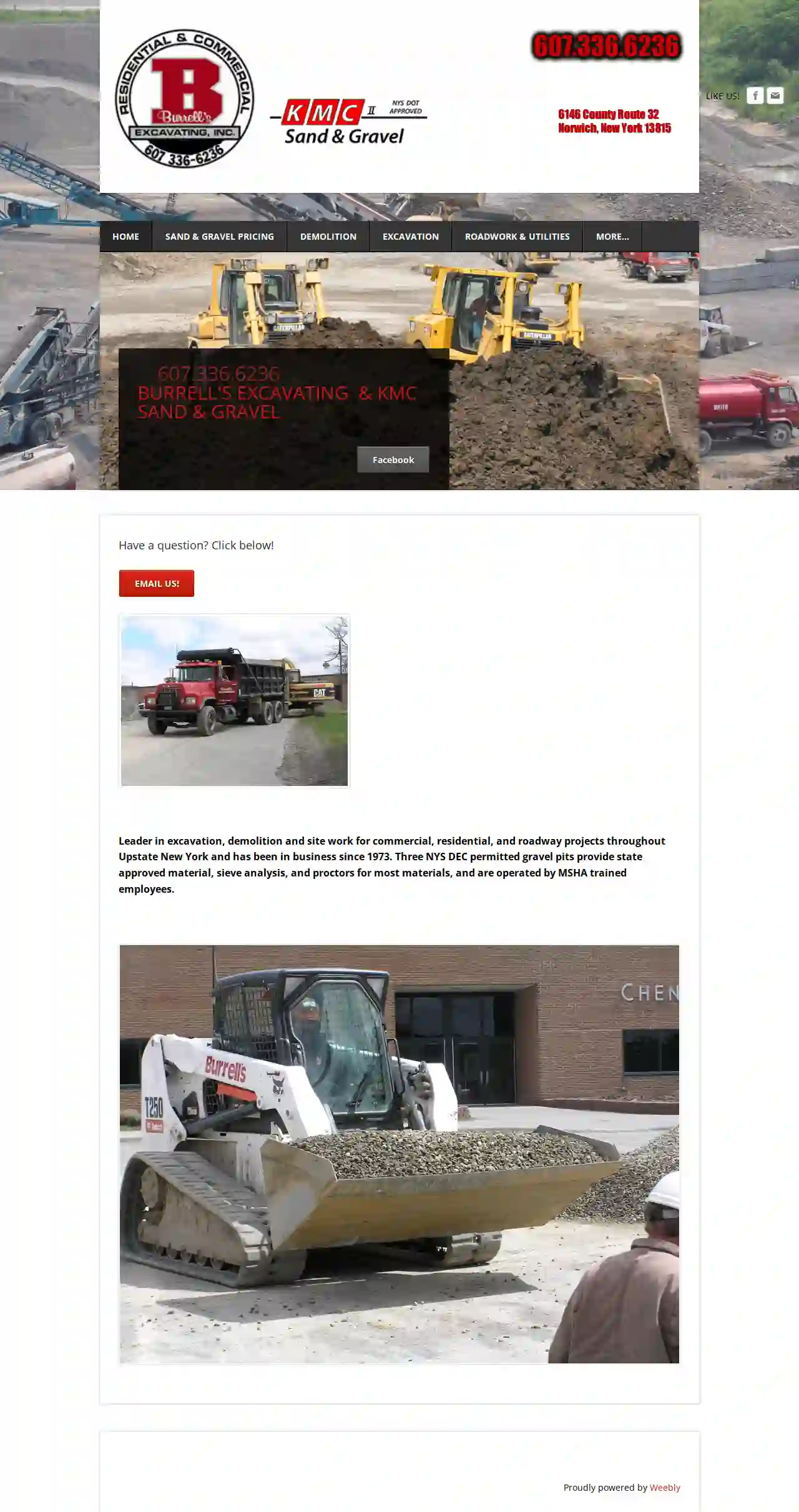Demolition Contractors Norwich
Find the best Demo Contractors in Norwich
Get up to 3 Demolition Contractors quotes for your project today! Compare profiles, reviews, accreditations, portfolio, etc... and choose the best service.
Service Needed
City or Town
- No
Norwich Construction
55 reviewsNorwich, USWe are a local business dedicated to providing high-quality services to our community. Our team is committed to exceeding your expectations and delivering exceptional results. We are passionate about what we do and strive to build lasting relationships with our clients. Contact us today to learn more about how we can help you achieve your goals.
- Services
- Why Us?
- Gallery
Get Quote 
Burrell's Excavating Inc
4.817 reviewsNorwich, US- Services
- Why Us?
Get Quote
Over 3,943+ Excavation Companies onboarded
Our excavation providers operate in Norwich and surroundings!
ExcavationHQ has curated and vetted the Best Excavation Contractors near Norwich. Find a top & reliable pro today.
Frequently Asked Questions About Demolition Contractors
Find answers to common questions about demolition contractors and hiring a demolition company for your project in the USA.
- Experience: Look for companies with a proven track record and years of experience in the demolition industry.
- Licensing and Insurance: Ensure the contractor is properly licensed to operate in your area and carries adequate insurance to protect you from liability.
- Safety Record: Inquire about their safety protocols and accident history. A reputable contractor prioritizes safety.
- References and Reviews: Ask for references from past clients and check online reviews to gauge their reputation and customer satisfaction.
- Professionalism: Choose a company that communicates clearly, provides detailed estimates, and has a courteous and responsive team.
- Safety: Experienced contractors have the knowledge, skills, and safety training to execute demolitions safely, minimizing risks to workers and surrounding areas.
- Efficiency: Contractors have the specialized equipment and expertise to complete demolitions efficiently, saving time and reducing project costs.
- Compliance: Reputable contractors are familiar with local regulations and permitting requirements, ensuring compliance and avoiding legal issues.
- Waste Management: Contractors have waste management plans to handle debris responsibly, including recycling and proper disposal.
- Liability Protection: Insured contractors protect you from financial responsibility for accidents or damages during the demolition process.
- Recycling: Concrete, brick, metal, and wood can be recycled and reused in other construction projects, reducing waste sent to landfills.
- Landfill Disposal: Non-recyclable materials are disposed of in designated landfills according to local regulations.
- Donation: Some materials, such as fixtures or appliances, may be suitable for donation to charitable organizations.
How do I find a reputable demolition contractor?
Finding a reputable demolition contractor is crucial for a safe and successful project. Consider these factors:
What are the benefits of hiring a professional demolition contractor?
Hiring a professional demolition contractor offers numerous advantages:
What happens to the debris after demolition?
After demolition, the debris is typically sorted and disposed of responsibly. Options include:
What is a demolition bond?
A demolition bond is a type of surety bond that protects the public and ensures the demolition contractor fulfills their contractual obligations. It provides financial protection if the contractor fails to complete the project as agreed, violates permit conditions, or causes damage to surrounding property. Demolition bonds are often required by local authorities as part of the permitting process.
How do I find a reputable demolition contractor?
Finding a reputable demolition contractor is crucial for a safe and successful project. Consider these factors:
- Experience: Look for companies with a proven track record and years of experience in the demolition industry.
- Licensing and Insurance: Ensure the contractor is properly licensed to operate in your area and carries adequate insurance to protect you from liability.
- Safety Record: Inquire about their safety protocols and accident history. A reputable contractor prioritizes safety.
- References and Reviews: Ask for references from past clients and check online reviews to gauge their reputation and customer satisfaction.
- Professionalism: Choose a company that communicates clearly, provides detailed estimates, and has a courteous and responsive team.
What are the benefits of hiring a professional demolition contractor?
Hiring a professional demolition contractor offers numerous advantages:
- Safety: Experienced contractors have the knowledge, skills, and safety training to execute demolitions safely, minimizing risks to workers and surrounding areas.
- Efficiency: Contractors have the specialized equipment and expertise to complete demolitions efficiently, saving time and reducing project costs.
- Compliance: Reputable contractors are familiar with local regulations and permitting requirements, ensuring compliance and avoiding legal issues.
- Waste Management: Contractors have waste management plans to handle debris responsibly, including recycling and proper disposal.
- Liability Protection: Insured contractors protect you from financial responsibility for accidents or damages during the demolition process.
What happens to the debris after demolition?
After demolition, the debris is typically sorted and disposed of responsibly. Options include:
- Recycling: Concrete, brick, metal, and wood can be recycled and reused in other construction projects, reducing waste sent to landfills.
- Landfill Disposal: Non-recyclable materials are disposed of in designated landfills according to local regulations.
- Donation: Some materials, such as fixtures or appliances, may be suitable for donation to charitable organizations.
What is a demolition bond?
A demolition bond is a type of surety bond that protects the public and ensures the demolition contractor fulfills their contractual obligations. It provides financial protection if the contractor fails to complete the project as agreed, violates permit conditions, or causes damage to surrounding property. Demolition bonds are often required by local authorities as part of the permitting process.